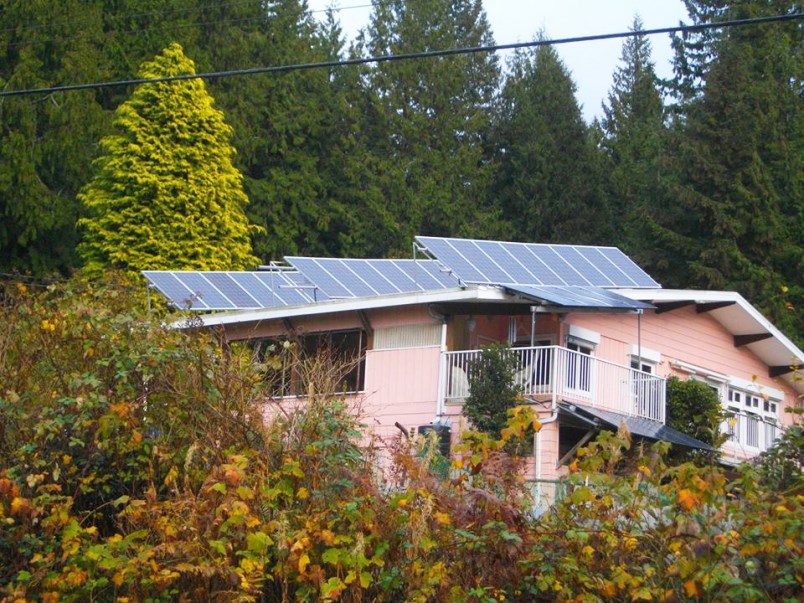New buildings on the Sunshine Coast should be solar ready and wired for electric vehicle (EV) charging – and local bylaws could be the tool to ensure that happens, says the Sunshine Coast Community Solar Association (SCCSA).
“We’re not saying you have to put solar panels on the roof of your house – we’re just saying, build homes that are solar ready. Build homes that have the wiring put in place for the car chargers,” said SCCSA member Dennis Olson, who appeared with Donovan Whistler as a delegation at a May 9 Sunshine Coast Regional District (SCRD) planning committee meeting.
The pair discussed how zoning bylaw 310, which is currently under review, could be updated to include rules for solar and EV charging, as well as other government incentives.
A requirement for solar and EV charging readiness is not included in any local government bylaws, according to Olson, who said with a price tag of up to $400 per unit, it costs less to install the equipment during construction rather than retrofitting buildings. “I don’t think we’re asking much of the developers here, to do this,” he told directors.
Olson and Whistler applauded the SCRD for its early adoption of a provincial incentive for new homes to be ready for solar hot water heating but suggested they go further. “There’s no reason this can’t be expanded to all buildings and expanded to include solar PV and integrating electric charging,” Whistler said.
Halfmoon Bay director and SCRD chair Lori Pratt said while she is a “huge proponent of solar,” they should ensure solar readiness fits in with current provincial and federal building codes. “Sometimes if you’re ahead of the curve as a local government, you take on the liability,” she said.
The province has to approve local government building bylaws, responded Ian Hall, the SCRD’s general manager of planning and community development.
Roberts Creek director Andreas Tize noted that not all properties are solar-friendly, which could pose a challenge when drawing up rules. “I don’t know if you want to be cutting down a hundred trees just so your solar panels are getting some sunlight. There needs to be some give and take,” he said, before suggesting local government could map out areas where solar incentives could apply.
According to a survey conducted by the SCCSA, 60 per cent of homes on the Sunshine Coast are “ideal for solar,” and 20 per cent are marginal.
Hall said while it may be a challenge to regulate that buildings be solar and EV charger ready, there may be a number of “barrier removal opportunities” and “educational opportunities” that local government could pursue.
Gibsons director Bill Beamish pointed to a recent resolution put forward by the SCRD for the province to declare a climate emergency. “We have to look at how we’re going to respond to an emergency,” he said. “That’s going to colour a lot of decisions going forward if we want to be true to that process, so we need to be considering these things.”
A report is expected at a future committee meeting to explore the subject further.



